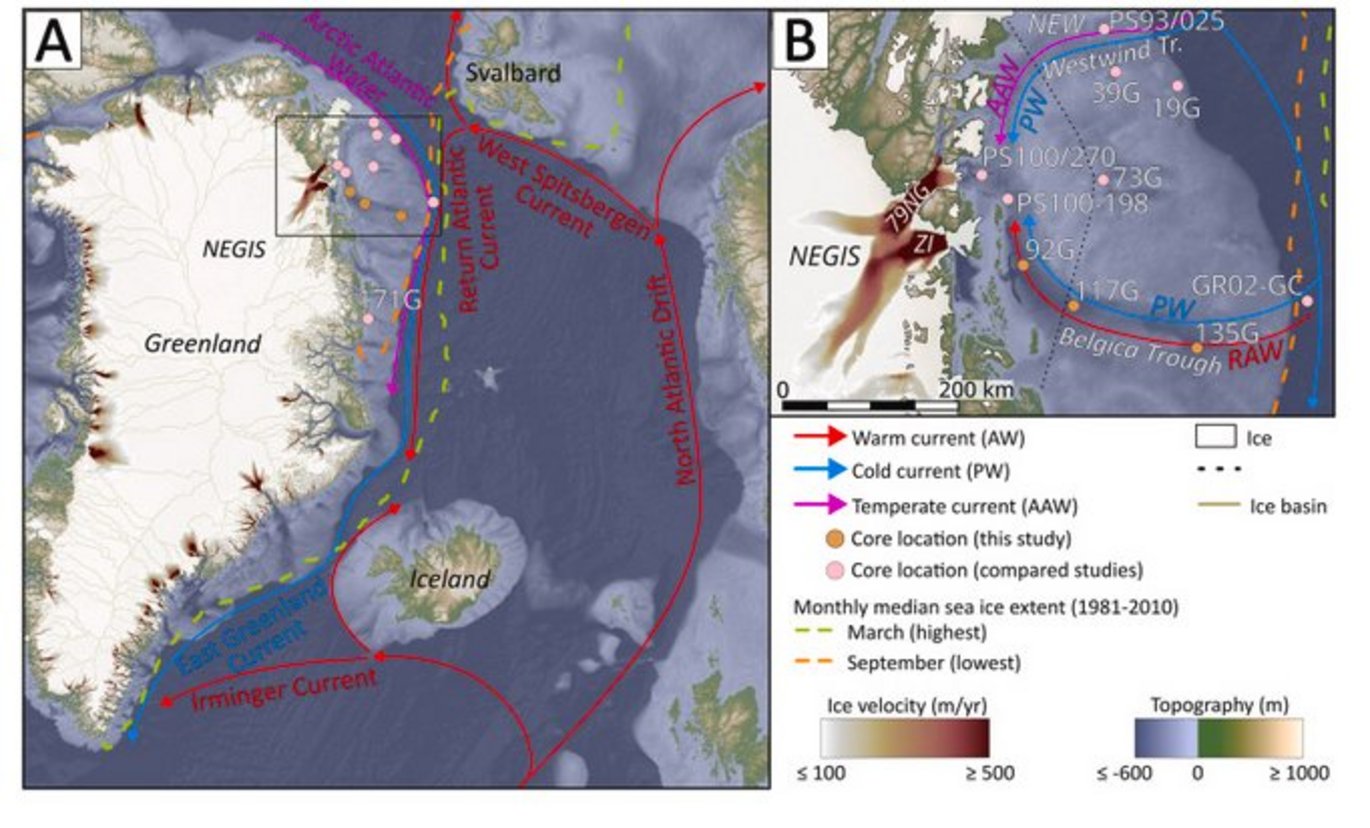Time-transgressive response of benthic foraminifera to the deglaciation of the Northeast Greenland shelf
New publication by Mads Ramsgaard Stoltenberg, Tuomas Junna, Joanna Davies, Karoline Kristensen, Katrine Elnegaard Hansen, Christof Pearce, Marit Solveig Seidenkrantz

Abstract:
Proxy-based reconstructions are imperative for understanding long-term ice dynamics, ecological conditions, and oceanographic variability following the deglaciation due to the temporal limitation of instrumental records. This study examines the response of benthic foraminiferal assemblages to the deglaciation of the Northeast Greenland shelf based on three sediment cores from the Belgica Trough (∼77°N), testing to which degree the foraminifera show a consistent response to environmental change. Recent studies from the Belgica Trough reveal that the shelf edge was deglaciated before 16.6 cal ka BP through a stepwise ice retreat, followed by a rapid retreat through the inner shelf, likely before 12.5 cal ka BP. The results of this study reveal the subsequent development of the deglaciated marine environment to exhibit a consistent time-transgressive foraminiferal assemblage succession across the core sites, delineated by three distinct foraminiferal zones. This allows us to further improve previous reconstructions of the deglacial-Holocene paleoenvironmental and paleoceanographic development of the shelf. It also highlights the sensitivity of benthic foraminifera towards the complex interaction between ice dynamics, ecological conditions, and oceanographic variability, proving their reliability and consistency as a proxy. Comparisons with other Arctic deglacial successions suggest the potential for identifying standard assemblages to recognize specific stages in a deglacial succession: Assemblages characterized by the species Stetsonia horvathi, Stainforthia concava, and Glomulina oculus appear as a reliable indicator of sub-ice shelf conditions following deglaciation, while stable higher salinity conditions often found during periods of influx of Atlantic-derived water is characterized by Cassidulina neoteretis, Cassidulina reniforme, and Islandiella norcrossi. High-productivity environments are advantageous for Melonis barleeanus, Stainforthia feylingi, and other eutrophic species, and these species thus make out a reliable standard for recognizing productive paleoenvironments often linked to ice edges or seasonal sea ice. Dissolution of calcareous taxa, and dominance of agglutinated taxa characterize cold, corrosive bottom water conditions and/or periods of brine formation.
